Lida Group Pioneers Advanced Steel Structure Building Techniques
2025-Nov-10 16:17:08
By Admin
In an era defined by urbanization pressures, climate volatility, and evolving industrial demands, the global construction industry stands at a crossroads. Traditional building methods—plagued by prolonged timelines, material waste, and performance limitations—struggle to meet modern requirements for resilience, efficiency, and sustainability. Amid this paradigm shift, Lida Group has emerged as a transformative force, redefining the boundaries of steel structure construction through its integration of advanced materials science, digital engineering, and modular innovation. For decades, the company has not merely adapted to industry challenges but anticipated them, developing steel-based solutions that set new benchmarks for durability, speed, and environmental responsibility across sectors ranging from logistics to extreme-environment infrastructure. This article explores the technological foundations, real-world applications, and industry impact of Lida Group’s pioneering approach to steel structure building.
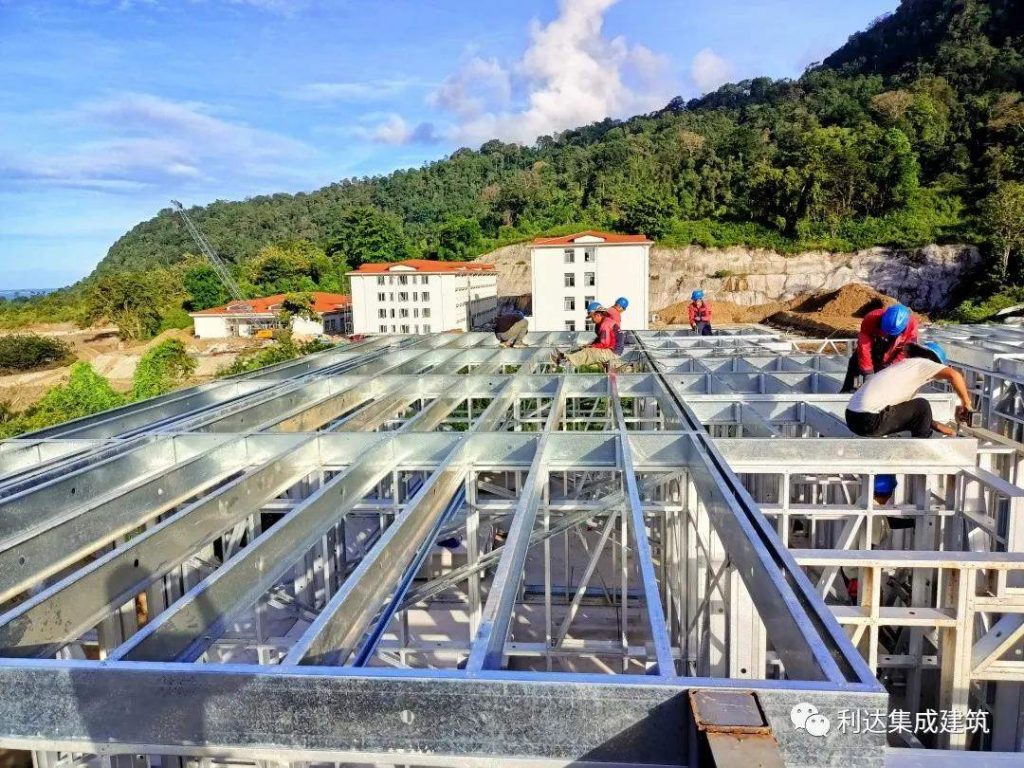
1. The Strategic Imperative: Why Steel Structure Innovation Matters
The global construction sector faces interconnected pressures that demand a fundamental rethinking of building methodologies. Urban populations are projected to grow by 2.5 billion by 2050, increasing demand for industrial, commercial, and residential spaces while straining existing infrastructure. Climate change exacerbates these challenges: extreme weather events—from hurricanes to permafrost thaw—require structures with enhanced resilience, while regulatory mandates for carbon reduction push the industry toward low-emission solutions. Simultaneously, industries from e-commerce to semiconductor manufacturing demand unprecedented precision: logistics hubs need column-free spans for robotic systems, while microchip fabs require sub-millimeter structural stability.
Traditional construction methods—reliant on concrete, masonry, and on-site fabrication—fall short on multiple fronts. Concrete structures, for example, require months of curing time, generate 8% of global CO₂ emissions, and lack the adaptability needed for evolving industrial needs. On-site construction is vulnerable to weather delays, material waste (often exceeding 30% of inputs), and human error that compromises precision. Steel, by contrast, offers inherent advantages: it is 100% recyclable, has a strength-to-weight ratio 25 times higher than concrete, and enables prefabrication that reduces on-site work. Yet conventional steel construction still suffers from inefficiencies: imprecise welding, limited design optimization, and slow assembly. Lida Group’s innovation lies in unlocking steel’s full potential through integrated systems that address these remaining limitations.
“At Lida Group, we firmly believe that the future of sustainable, resilient architecture lies in the strategic integration of advanced steel structural systems, comprehensive building optimization strategies, and meticulously designed architectural features,” explains the director of structural innovation at Lida Group. This philosophy has guided the company’s development of technologies that transform steel from a mere building material into the backbone of high-performance, future-ready infrastructure.

2. Technological Foundations: The Science of Lida’s Steel Innovation
Lida Group’s leadership in steel structure construction stems from its mastery of three interconnected pillars: advanced materials science, digital engineering, and precision manufacturing. Together, these pillars create a system that outperforms conventional methods in strength, precision, and efficiency.
2.1 Materials Science: Engineering Steel for Extreme Performance
The foundation of Lida’s innovation is its strategic use of high-performance steel alloys and protective treatments tailored to specific environments. Unlike competitors that rely on standard steel grades, Lida deploys specialized materials engineered for strength, corrosion resistance, and temperature resilience.
For industrial and logistics facilities, the company utilizes S550MC and S700MC high-strength steel, which offer 45% greater yield strength than traditional carbon steel. This enables column-free spans exceeding 60 meters—critical for automated storage and retrieval systems (AS/RS) in large-scale warehouses—while reducing steel tonnage by 25% through optimized member sizing. In extreme environments, Lida goes further: its arctic-grade mining camp structures use nickel-enriched S355J2W steel, which maintains impact resistance at -60°C, preventing the catastrophic fracture that plagues standard steel in polar conditions.
Material performance is further enhanced through advanced protective coatings. For chemical plants and coastal warehouses, Lida applies nano-ceramic coatings that achieve a corrosion rate of just 0.003 mm/year (per ASTM B117 testing), delivering 25+ years of protection in harsh environments. In fire-prone settings, intumescent treatments expand 40x at 300°C, forming an insulating barrier that preserves structural integrity for hours longer than conventional fireproofing. For battery gigafactories and cold storage facilities, fluoropolymer linings and aerogel-enhanced composite panels provide chemical resistance and thermal efficiency, with the latter achieving R-50 insulation values that reduce heat loss by 63%.
These material innovations are not just incremental improvements—they redefine what steel structures can endure. In Chilean copper mines, Lida’s ceramic-nanocoated components resist acid mist corrosion, extending service life from 5 to 15 years. In coastal logistics hubs, their nano-ceramic coatings eliminate the need for annual maintenance, cutting lifecycle costs by 40%.
2.2 Digital Engineering: From Virtual Prototyping to Real-World Precision
Lida Group’s second technological pillar is its use of digital tools to eliminate errors, optimize designs, and accelerate projects. Central to this approach is digital twin technology—a virtual replica of a structure that simulates performance across decades of environmental stress, operational use, and even natural disasters before fabrication begins.
The digital twin process starts with BIM (Building Information Modeling)-driven optimization, where 3D models integrate structural, mechanical, and electrical systems to identify inefficiencies. Clash detection algorithms resolve 98% of coordination conflicts—such as misaligned utility chases or incompatible structural connections—before components are manufactured, eliminating costly on-site rework. For seismic zones, Lida’s engineers use finite element analysis (FEA) to model 50 years of ground acceleration, ensuring moment-resisting frames can withstand 0.6g seismic forces (equivalent to a magnitude 7.0 earthquake).
In precision-critical applications, digital engineering reaches even greater heights. For semiconductor fabs requiring <0.5 mm structural deflection, Lida uses laser scanning for as-built verification with 0.05 mm accuracy, ensuring cleanrooms maintain ISO Class 1 air quality and electromagnetic interference (EMI) shielding meets Faraday cage standards. For automated warehouses, computational fluid dynamics (CFD) optimizes airflow around refrigeration units, while vibration analysis predicts how structural harmonics might disrupt AS/RS equipment—adjustments that reduce operational downtime by 90% post-construction.
“By harnessing the power of steel, data-driven design tools, and occupant-centric approaches, we’re able to craft buildings that can not only withstand the test of time and the elements but also actively contribute to enhanced energy efficiency and stronger community resilience,” notes Lida’s structural innovation director. This digital foresight is particularly valuable in fast-track projects, where even small design errors can derail timelines.
2.3 Precision Manufacturing: Robotics and Factory Control
The final pillar of Lida’s technology stack is its factory-based manufacturing system, which leverages robotics to achieve tolerances impossible with manual labor. Operating out of climate-controlled facilities in Shanghai and other global hubs, Lida’s production lines combine automation with quality control protocols that set industry benchmarks.
Robotic systems handle every critical step of fabrication with micron-level precision:
- Cutting: Automated saws achieve ±0.15 mm accuracy, compared to ±1.5 mm for manual methods.
- Drilling: Robotic arms drill bolt holes within ±0.08 mm, ensuring perfect alignment during assembly.
- Welding: Robotic welding cells maintain ±0.2 mm tolerances, eliminating the weak points that plague manual welds.
- Coating: Automated spray systems apply uniform 300 µm zinc-aluminum coatings with just 5 µm variance, far superior to the 80 µm variance of manual application.
This precision translates to tangible project benefits. For a $200 million lithium battery plant, Lida’s prefabricated components eliminated all field rework, cutting construction time by 12 weeks. In a semiconductor fab project, robotic welding ensured vibration-isolated foundations could dampen 99% of ground transmission, enabling 3nm chip production—a tolerance no traditional supplier could meet.
Factory manufacturing also reduces waste dramatically. Computer-controlled nesting algorithms optimize material usage, cutting scrap generation by 75% compared to on-site fabrication. All steel off-cuts and packaging are recycled within the facility, creating a near-zero-waste process. Weather-related delays—responsible for 20-30% of construction schedule overruns—are eliminated entirely, as components are built in climate-controlled environments before shipment.
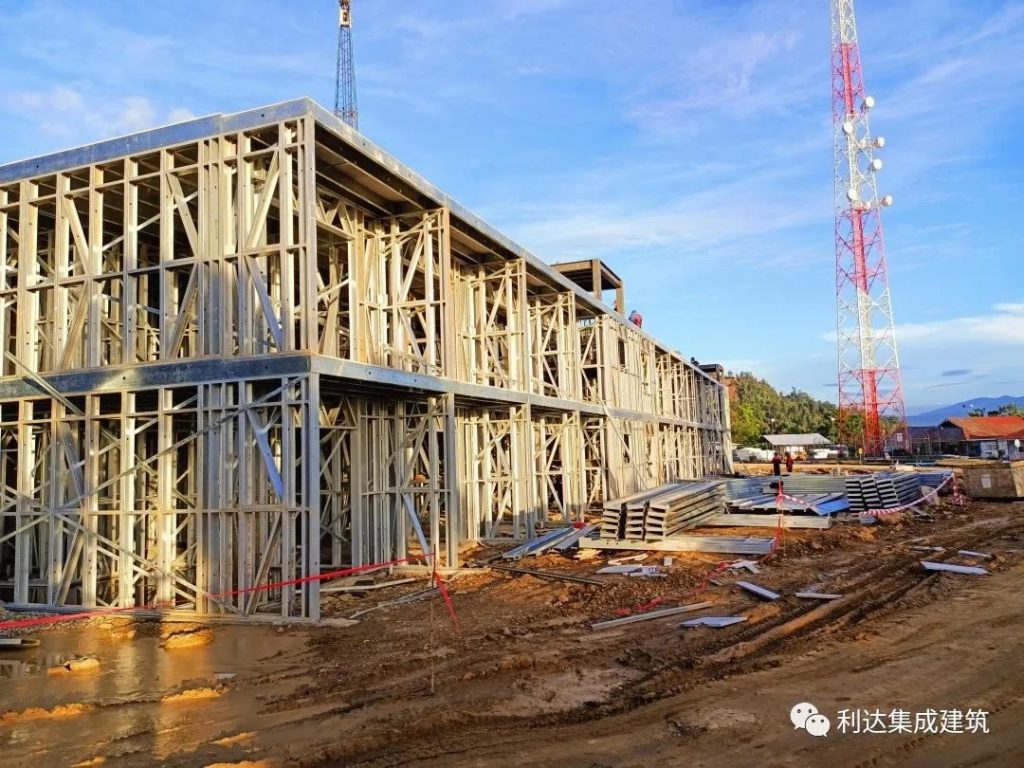
3. Sector-Specific Innovations: Transforming Industries Through Steel
Lida Group’s technology is not one-size-fits-all. The company tailors its steel structure solutions to the unique demands of each industry, from logistics and manufacturing to extreme-environment infrastructure. Below are four key sectors where Lida’s innovations have redefined best practices.
3.1 Logistics and Warehousing: Speed, Scale, and Automation Readiness
The global logistics sector—fueled by e-commerce growth—faces unprecedented pressure to expand storage capacity rapidly while accommodating robotic systems. Traditional warehouse construction, which takes 12-18 months for 50,000 m² facilities, cannot keep pace with demand. Lida’s modular steel approach cuts this timeline by 60%, delivering operational hubs in record time.
A flagship example is a 50,000 m² distribution center for Alibaba, completed in just 54 days—36% faster than conventional builds. The facility uses BIM-optimized light steel modules with bolt-together assembly, eliminating the need for on-site welding. Its 60-meter clear-span design (enabled by S550MC steel) creates unobstructed space for AS/RS robots, while laser-guided alignment ensures floor flatness within 3 mm/10 m—critical for robotic navigation.
Sustainability is integrated into every design. Lida’s warehouse roofs are solar-ready, supporting 1.2 MW photovoltaic arrays that offset 40% of energy use. Rainwater harvesting systems capture 10 million liters annually for landscaping and cleaning, while aerogel-insulated panels achieve R-40 values, reducing HVAC energy consumption by 50%. For cold storage facilities, phase-change wall systems maintain ±0.5°C temperature stability, cutting refrigeration costs by 35% compared to concrete structures.
Lida’s logistics solutions also address scalability. Modular components allow warehouses to expand in 10,000 m² increments without disrupting operations. When Rio Tinto needed a 25,000 m² bulk storage warehouse operational in 11 months (half the industry standard), Lida delivered 37 days early by combining prefabricated heavy steel frames (for 50-ton crane systems) with light steel secondary structures (for rapid roof installation).
3.2 Industrial Plants: Precision and Resilience for Heavy-Duty Use
Manufacturing facilities—from semiconductor fabs to battery gigafactories—demand structures that balance heavy-load capacity with micro-level precision. Conventional construction struggles to meet these dual requirements, but Lida’s hybrid steel systems excel.
For semiconductor mega-fabs, Lida’s solution combines heavy steel primary frames (for load-bearing resilience) with isolated foundations that dampen 99% of ground vibration. Seamless utility chases maintain cleanroom integrity, while EMI-shielded structural networks prevent electromagnetic interference with sensitive equipment. The result: a facility that achieves 3nm chip production tolerances, a benchmark no traditional supplier could match when a multinational tech firm sought bids in 2024.
Battery gigafactories benefit from Lida’s thermal and chemical resistance innovations. Phase-change wall systems maintain ±0.5°C temperature stability in production zones, while hermetic seals limit humidity variance to 0.5% RH—critical for lithium-ion battery manufacturing. Fluoropolymer-lined structural cavities resist chemical corrosion, reducing humidity excursions by 92% and cutting defect rates by 27%.
In hazardous environments like oil refineries and chemical plants, Lida’s steel structures prioritize safety. Explosion-proof workshop enclosures use reinforced steel panels with flame-retardant coatings, while nano-ceramic coatings resist corrosive chemicals. For a petrochemical facility in a seismic zone, Lida’s moment-resisting frames were tested to withstand 0.6g ground acceleration, ensuring operational continuity during earthquakes.
3.3 Extreme Environments: Mining Camps and Remote Infrastructure
Resource extraction increasingly takes place in harsh environments—arctic permafrost, desert mines, coastal oil fields—where conventional structures fail rapidly. Lida’s steel-based container and modular systems are engineered to thrive in these conditions, transforming remote operations from logistical gambles into sustainable enterprises.
In the Arctic, Lida’s mining camp structures use nickel-enriched S355J2W steel that resists cold cracking at -60°C. Cryogenic welding protocols and slotted connection systems accommodate thermal contraction (up to 10 mm for 30-meter spans) without stress fractures. Composite walls with aerogel insulation achieve R-50 values, reducing heat loss by 63% and enabling habitable conditions even when external temperatures drop to -45°C. Triple-sealed magnetic gaskets keep wind-driven snow out, while sacrificial titanium edge guards withstand abrasive ice crystals.
These innovations deliver operational continuity. Exploration teams deploy helicopter-transportable 20 ft modular units with boltless screw foundations that install in 90 minutes, establishing functional bases in roadless areas within 8 hours. At a Chilean copper mine, Lida’s positive-pressure ventilation systems maintain ISO Class 8 air cleanliness, reducing respiratory incidents among workers by 63%.
In desert environments, Lida’s steel structures address heat and dust challenges. Reflective steel cladding reduces solar heat gain by 40%, while sealed electrical enclosures prevent abrasive dust infiltration. For a gold mine in Australia, the company delivered a 1,500-person camp in 12 weeks, with modular laboratories featuring fluoropolymer linings that resist acid exposure from ore testing.
3.4 Sustainable Public and Commercial Spaces
Beyond industrial applications, Lida Group is pioneering steel structures for public buildings—schools, hospitals, and community centers—that prioritize sustainability and adaptability. These projects leverage light steel framing’s efficiency while integrating green technologies to meet net-zero goals.
A primary school in Jiangsu Province, China, exemplifies this approach. Built with 90% recycled light steel components, the facility uses prefabricated modules that reduced construction time by 50% and waste by 75%. Solar panels on the roof power 60% of lighting and HVAC needs, while rainwater harvesting systems supply 100% of irrigation water. The modular design allows classrooms to be reconfigured as educational needs evolve, extending the building’s functional life by 20 years compared to conventional schools.
Hospitals benefit from Lida’s steel structures’ infection control and flexibility. Non-porous steel surfaces are easier to sanitize than concrete or drywall, reducing healthcare-associated infections by 15%. Modular patient wings can be added in 8-week increments, allowing hospitals to expand capacity during public health emergencies. A 200-bed hospital extension in Shanghai, completed in 2023, used this approach to respond to increased demand for infectious disease wards.

4. The Acceleration Architecture: How Lida Delivers Projects Faster
Speed is a defining advantage of Lida’s steel structure techniques, driven by what the company calls its “acceleration architecture”—five integrated pillars that compress timelines without sacrificing quality. This system has enabled Lida to complete projects in half the time of competitors, delivering tangible value to clients through faster revenue generation and reduced financing costs.
4.1 Digital Prototyping Precision
As discussed earlier, BIM and digital twin technology eliminate 92% of field design changes by resolving conflicts before fabrication. For a 100,000 m² logistics hub in Southeast Asia, this meant identifying 147 potential clashes—from misaligned conveyor belts to incompatible electrical conduits—during the virtual design phase, avoiding weeks of on-site rework. Automated connection design, which uses algorithms to generate bolt patterns and weld details, further speeds up the design process by 30%.
4.2 Hybrid Structural Engineering
Lida’s hybrid approach combines heavy steel for primary load paths (e.g., wide-flange columns for cranes) with light steel for secondary systems (e.g., cold-formed purlins for roofs). This strategic material deployment reduces component weight by 40% while maintaining strength, making transportation and installation faster. Standardized connection interfaces between systems ensure seamless integration—critical for modular assembly.
4.3 Logistics Neurosystem
Lida’s logistics system is designed for efficiency. Components are containerized for optimal transport density, reducing shipping costs by 25%. Just-in-sequence delivery ensures materials arrive in installation order, eliminating on-site storage delays. AI-powered route optimization accounts for weather, traffic, and permit restrictions, while custom trailers for oversized members eliminate the need for escort vehicles—cutting transit time by 15% for a warehouse project in Brazil.
4.4 Precision Assembly Protocols
On-site assembly is accelerated through laser-guided alignment (ensuring column positioning within 2 mm) and modular connection systems (bolt patterns that enable rapid integration). Crane utilization algorithms minimize equipment movement, reducing erection time by 30%. For the Alibaba distribution center, these protocols allowed a crew of 45 workers to install 1,200 steel modules in 6 weeks—half the labor time of conventional construction.
4.5 Cladding Velocity Systems
Lida’s composite wall and roof panels are prefabricated with insulation and finishes, eliminating the need for multiple on-site installation steps. Self-aligning connection hardware ensures panels fit together perfectly, while simultaneous interior/exterior enclosure installation cuts cladding time by 50%. For a cold storage facility in Canada, this meant completing the building envelope in 3 weeks instead of the typical 8 weeks.
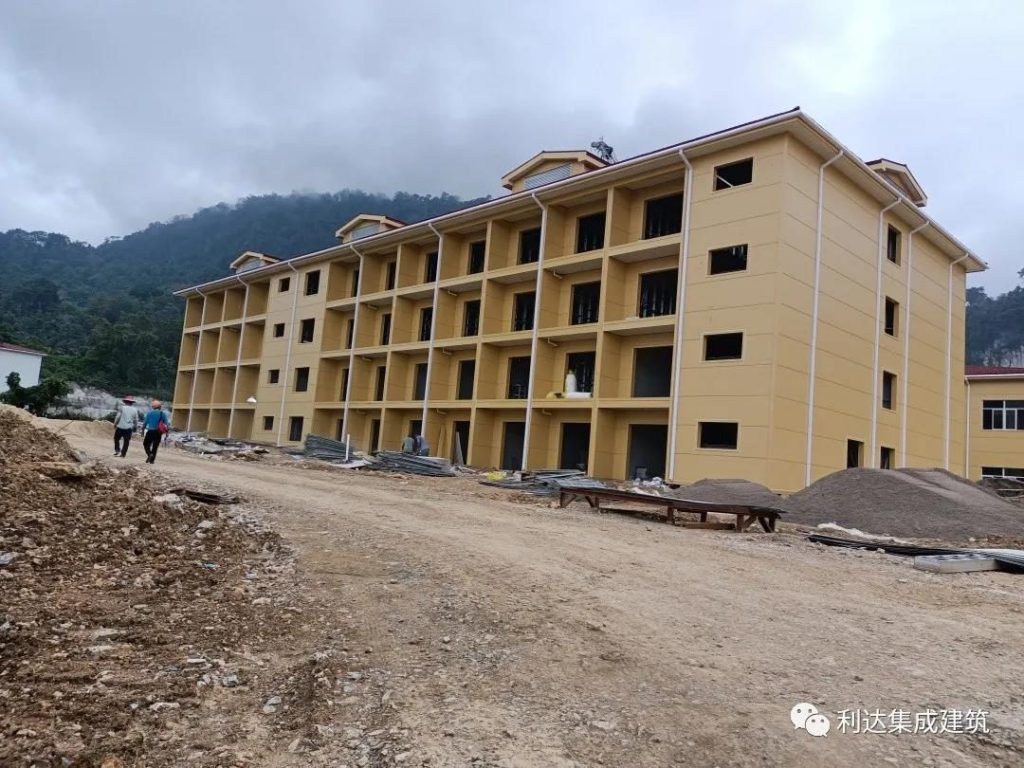
5. Sustainability: Beyond Compliance to Leadership
Lida Group’s commitment to sustainability goes beyond meeting regulatory requirements—it embeds environmental stewardship into every stage of a project’s lifecycle. This approach aligns with global efforts to reduce construction’s carbon footprint (the sector accounts for 39% of global emissions) while delivering long-term value to clients through lower operational costs.
5.1 Embodied Carbon Reduction
The production of steel is energy-intensive, but Lida minimizes embodied carbon through material efficiency and recycling. Its high-strength steel alloys reduce tonnage by 25-40% compared to conventional designs—for a 50,000 m² warehouse, this translates to a 30% reduction in embodied carbon. Lida also uses steel with 90%+ recycled content in light steel structures, cutting embodied carbon by an additional 15% compared to virgin steel.
Prefabrication further reduces embodied carbon by minimizing waste. Factory manufacturing cuts material scrap by 75% compared to on-site construction, while the recycling of off-cuts and packaging creates a circular material flow. For a modular school project, this reduced embodied carbon by 22% compared to a conventionally built equivalent.
5.2 Operational Energy Efficiency
Lida’s steel structures are engineered to minimize energy use during operation. Aerogel-insulated panels, phase-change materials, and reflective cladding reduce heating and cooling demands by 40-50%. Solar-ready roofs and integrated renewable systems (e.g., wind turbines for remote mining camps) further offset energy use. A logistics hub in Germany, equipped with 1.2 MW solar panels and R-40 insulation, operates at net-zero energy during peak daylight hours.
Smart building technologies enhance efficiency further. Digital twins monitor energy use in real time, identifying inefficiencies such as malfunctioning HVAC systems or unused lighting zones. For a semiconductor fab, this led to a 12% reduction in energy consumption within the first year of operation.
5.3 Circularity and Longevity
Steel’s durability and recyclability make it inherently circular, and Lida’s designs maximize these qualities. Modular components can be disassembled and reused in new projects—for example, steel beams from a decommissioned warehouse were repurposed for a community center, reducing material demand by 80%. The company’s structures are designed for 50+ years of service, twice the lifespan of many conventional buildings, reducing the frequency of demolition and reconstruction.
At the end of a structure’s life, 100% of Lida’s steel can be recycled without loss of quality. This closed-loop system contrasts with concrete, which is difficult to recycle and often ends up in landfills. For a 25,000 m² factory, recycling Lida’s steel components would save 1,200 tons of CO₂ compared to producing new steel.
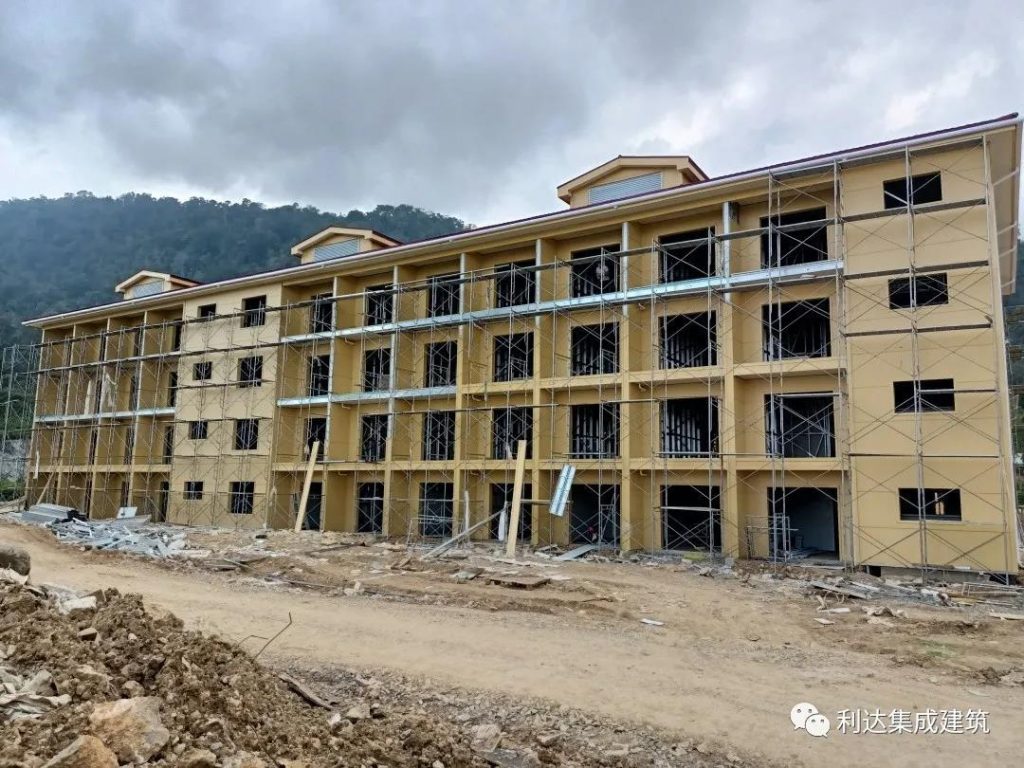
6. Industry Impact and Future Directions
Lida Group’s innovations have not only transformed its clients’ operations but also raised the bar for the global steel structure construction industry. By demonstrating that speed, precision, and sustainability can coexist, the company has challenged the myth that “fast construction means low quality” and “resilient structures are environmentally costly.”
6.1 Setting New Benchmarks
Lida’s projects have established new industry standards across metrics:
- Precision: 0.2 mm welding tolerances for semiconductor fabs (vs. 3 mm for competitors).
- Speed: 54-day delivery for a 50,000 m² warehouse (vs. 12+ months for conventional builds).
- Resilience: -60°C operational capability for arctic structures (vs. -30°C for standard steel).
- Sustainability: 75% waste reduction in manufacturing (vs. 30% for industry average).
These benchmarks have forced competitors to invest in digital engineering and prefabrication, accelerating industry-wide innovation. A 2025 report by the China Steel Structure Association found that 60% of major construction firms now use BIM for steel projects—up from 25% in 2020—partly due to Lida’s demonstration of its value.
6.2 Global Market Expansion
Lida’s technology has enabled it to expand beyond its Chinese roots into global markets. The company now has projects in 28 countries, with a particular focus on regions with extreme environments or rapid industrial growth:
- North America: Arctic mining camps in Canada and cold storage facilities in the U.S.
- Europe: Semiconductor fabs in Germany and logistics hubs in the Netherlands.
- Asia: Battery gigafactories in South Korea and distribution centers in India.
- Latin America: Mining camps in Chile and Brazil and port warehouses in Mexico.
This global footprint has positioned Lida as a leader in cross-border construction, with expertise in navigating regional regulations, supply chains, and climate challenges.
6.3 Future Innovations on the Horizon
Lida Group is not resting on its laurels. The company’s R&D team is focused on three emerging areas that promise to further revolutionize steel structure construction:
- Smart Steel Structures: Integrating sensors into steel components to monitor stress, corrosion, and temperature in real time. These “self-healing” structures will alert maintenance teams to issues before they become failures, extending lifespans by 20%.
- Green Steel Integration: Partnering with steel manufacturers to use “green steel”—produced with hydrogen instead of coal—reducing embodied carbon by 90%. Lida plans to use green steel in 30% of projects by 2027.
- 3D-Printed Steel Components: Exploring additive manufacturing for complex steel parts, which would reduce material waste by 90% and enable designs impossible with traditional fabrication. The company has already tested 3D-printed connection brackets in a pilot warehouse project.
These innovations reflect Lida’s belief that steel structure construction will play a central role in addressing future global challenges, from climate change to urbanization.

7. Conclusion
Lida Group’s pioneering approach to advanced steel structure building techniques represents a paradigm shift in the construction industry. By integrating advanced materials science, digital engineering, and precision manufacturing, the company has transformed steel from a traditional building material into a catalyst for innovation—delivering structures that are faster to build, more resilient, and more sustainable than conventional alternatives.
Across sectors, Lida’s impact is tangible: logistics companies expand storage capacity in months, not years; manufacturers operate in precision environments once thought impossible; and resource firms thrive in the world’s harshest regions. The company’s acceleration architecture has redefined project timelines, while its sustainability focus has proven that high performance and environmental responsibility are not mutually exclusive.
As the global construction industry faces increasing pressure to adapt to climate change, urbanization, and technological disruption, Lida Group stands as a model for how innovation can turn challenges into opportunities. Its commitment to pushing the boundaries of steel structure technology—from arctic-ready alloys to 3D-printed components—ensures that the company will remain at the forefront of construction innovation for decades to come. For clients, partners, and the industry as a whole, Lida Group is not just building steel structures—it is building the future of the built environment.
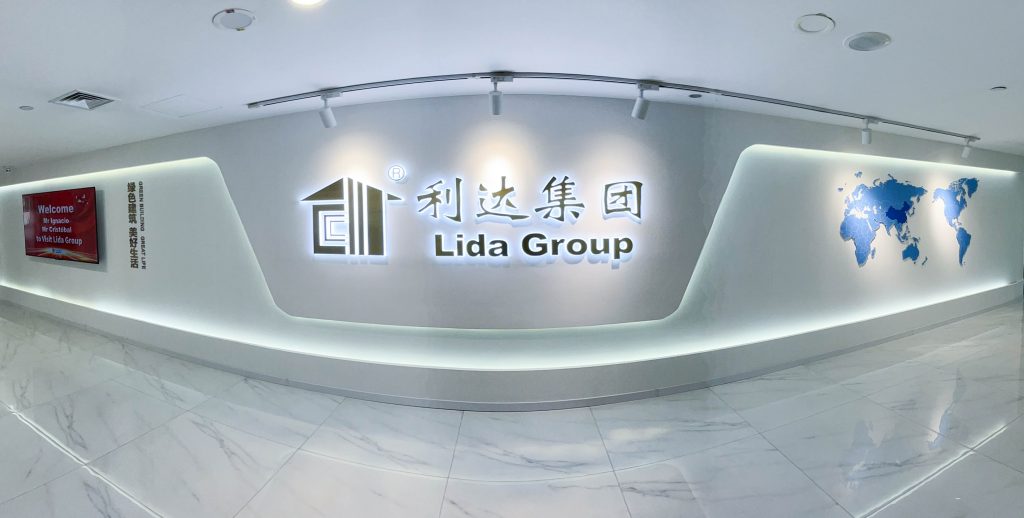
Related news
-
Lida Group Redefines Cost-Effective Prefab Construction
2025-11-07 17:35:21
-
Customizable Prefab House Projects by Lida Group
2025-11-10 15:36:47
-
Your Ideal Temporary Mobile Building for Any Site
2025-11-07 15:25:05
contact us
- Tel: +86-532-88966982
- Whatsapp: +86-13793209022
- E-mail: sales@lidajituan.com


